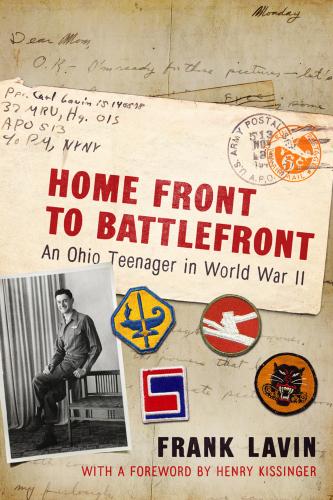10. Mannheim, Gmund, and Lauda Occupation
Illustrations
Figure I-1. Carl and Fred with Dorothy, c. 1930
Figure 1-1. Carl’s Miami transcript
Figure 2-1. Tank Destroyer Center letterhead
Figure 2-2. Enlisted Men’s Service Club letterhead
Figure 2-3. Camp Maxey letterhead
Figure 3-1. Queen’s College letterhead and envelope
Figure 4-1. Camp Shelby letter and envelope
Figure 4-3. USO letterhead
Figure 5-1. V-mail, December 1944
Figure 6-1. V-mail, Belgium, January 1945
Figures 7-1. Second Reich and Weimar banknotes
Figure 7-2. Fashions from Germany
Figure 8-1. East of the Rhine letterhead and envelope
Figure 8-2. B. Sprengel & Co. letterhead
Figure 9-1. Schützengilde Hameln
Figure 10-1. American Red Cross letterhead
Figure 11-1. Reims letter and envelope
Figure E-1. Remainder of 3rd Platoon, July 1945
Photographs following Chapter 5
Harry Lavin and Wurstmeisters, early 1920s
Carl and Fred, 1928
Extended Lavin family, early 1930s
Late 1930s, and Leo is happy
Carl’s 1942 Lehman High yearbook photo
Carl in uniform, Camp Hood, Texas, July 1943
Home leave before shipping to Britain
Photographs following Chapter 8
The 84th Division in the Battle of the Bulge
84th Division: From the Siegfried Line to the Elbe
June 1944. A happy GI wearing the only decoration worth wearing: Combat Infantryman Badge
Hannover as found by the 84th Infantry Division
The 335th welcomes you to the Rhine
Krefeld, Carl’s final battle
President Truman reviews the 84th
Jack Benny
Foreword
My troop ship to Europe was different than Carl Lavin’s. Our ship embarked from New York in a convoy of Liberty Ships and, after only some two days at sea, there was a minor collision between two of the ships in the convoy. Not much more serious than a scrape, perhaps, but the damages were such that our ship had to return to New York Harbor. Unbeknownst to us, the good citizens of New York assumed we had returned from the Front, and laid on a heroes’ welcome. We did not have the heart to tell them we had only been at sea a few days and had never seen combat. Eventually we were dispatched after repairs to the ship and I joined the 84th Division in Europe. Carl did not join our division until Christmas Day 1944 when he was detached from the 69th Division and hurried to the Front as a response to the German offensive in the Ardennes.
Carl Lavin and I served together, though we did not know each other at the time. He and I were both foot soldiers, not just in the same division, but also in the same regiment and battalion, though in a different company. And shortly after he joined the division, I was transferred to Division Headquarters.
Yet reading this book, and his letters, I have the sense that I knew him intimately. We sometimes forget that the US Army was, and is, essentially a force of teenagers and young men who are required to grapple with the exigencies of combat even as they are attempting to grapple with adulthood.
I have a special place in my heart for the men of the 335th Regiment of the 84th Division. They saw some of the Second World War’s more coruscating moments. They served capably and with enormous losses. And their story deserves to be told. Thankfully, this book has done so.
For me, the war was the opportunity to repay my adopted country for the safety it offered my family after we had been driven from the land of our birth. It was also a journey back to that country of birth to witness firsthand the devastation wrought by that conflict.
It was in the 84th Division that I first met Fritz Kraemer, the staid Prussian aristocrat who helped start me on the road of serious academic work.
I believe Carl also made some key decisions because of the war. He cherished the comfort and settled environment of his upbringing. He contributed to the vast postwar economic boom that propelled America to superpower status.
After the war, we went our separate ways. My calling was academia, and eventually public service. Carl returned to a family business in the Midwest and raised his family.
Though I never knew Carl directly, I got to know his son Frank through public service, as he served as US Ambassador to Singapore and later as the Under Secretary at the US Department of Commerce, and we had the chance to collaborate several times.
I am grateful to Frank for his public service, but more importantly for his work in putting together this book. He put in the work to edit and research the work therein. As I see the strength of the man in his letters, so do I see a reflection of those strengths in his son.
—Henry A. Kissinger
